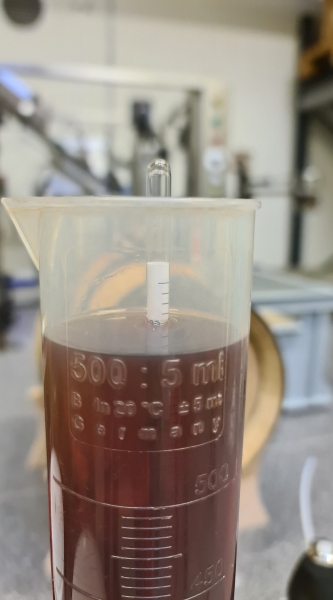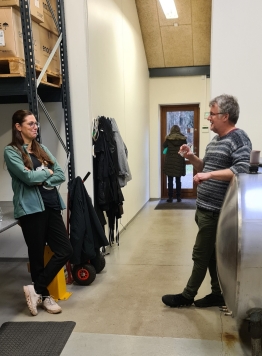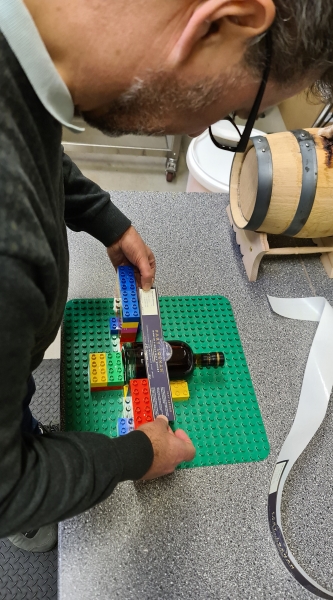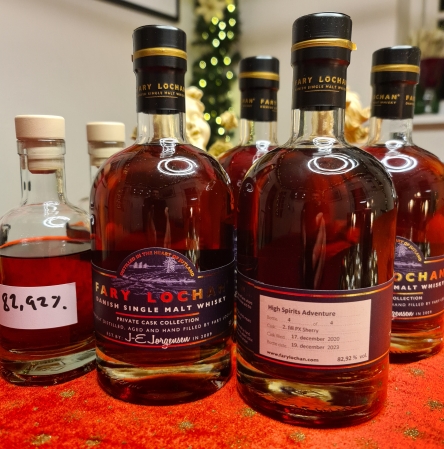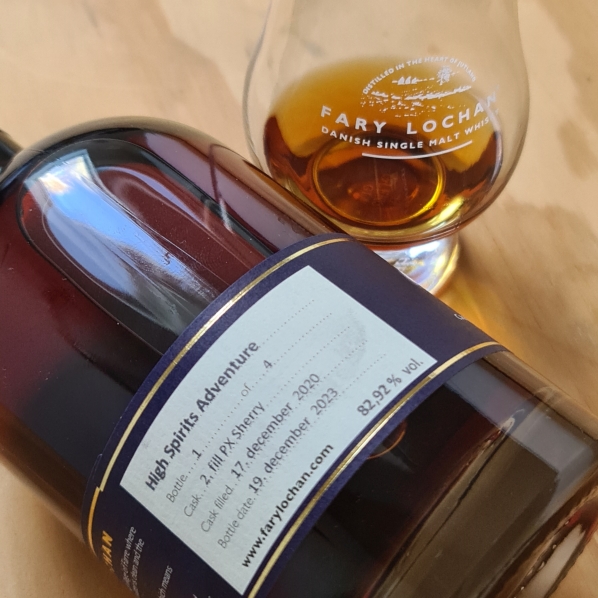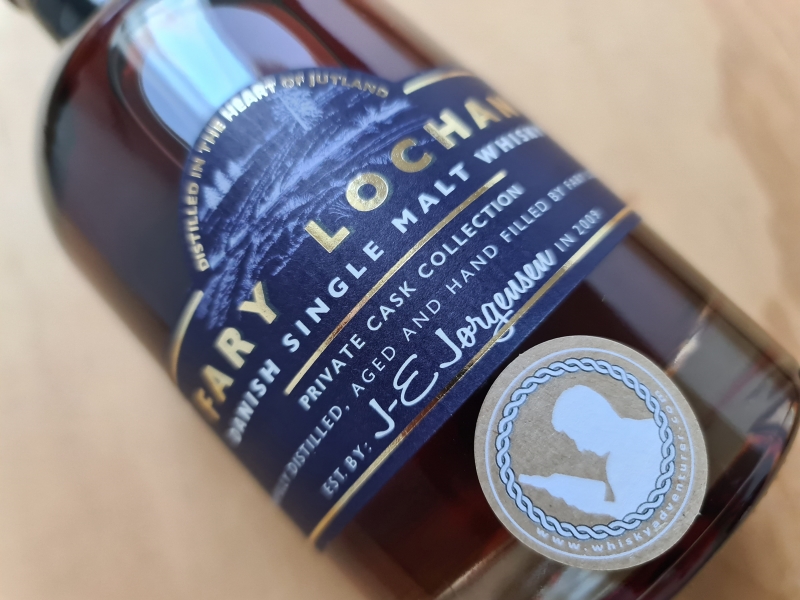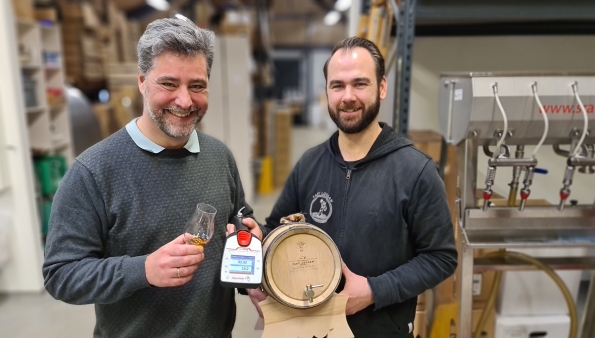There can be the wildest magic in making whisky, I have come to realize by tasting whisky from many different distilleries from several different places in the world, but witnessing the transformation of new make that has occurred in my little experiment, in a small 7-liter oak barrel, is something I never imagined I would experience.
I’m not a magician, and it’s not an illusion poured into bottles that I’m going to tell you about, but a combination of different events in the creation of a whisky that can do something truly special. I haven’t made the new make used for this wild whisky myself. The good people at Fary Lochan Distillery have, and needless to say, it’s a good new make that’s been used. It’s without smoke and just downright delicious, oily, with good notes of citrus and malt in the taste, in other words, a good starting point.
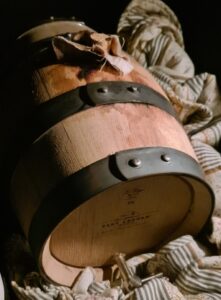
The First Cask
Let’s start somewhere else entirely to provide a bit of background as to why I embarked on this experiment. It’s one of those experiments that many whisky enthusiasts undertake at some point, I suspect. It’s exciting to taste whisky, and at some point, you just have to have that little barrel standing where the whisky matures. It happens at home, and there’s plenty to talk about when friends visit the whisky room.
So it happened to me too. The opportunity arose to buy a small cask of whisky from Fary Lochan. They had had some small 7-8 liter casks made from large sherry casks that had been rebuilt, scraped, lightly toasted, and seasoned with PX sherry. Then Fary Lochan 3-year-old ex-bourbon barrel-aged whisky was filled in, and it was up to the buyer to determine the length of this finish.
Maturing whisky in small casks happens faster because there is much more contact between wood and liquid than in the large casks we normally get our whisky from. If it’s a new cask that hasn’t been used before, it will also impart significantly more flavor from the wood and color than a used cask, and one of the risks of leaving the spirit on these new casks is that they can tip over in flavor, and if this happens in a small cask, it’s not certain that it should stay in the cask for very long. That’s often why they are only used to give a finish to a whisky.
The transformation of the whisky in this small 7-liter cask also happened quickly, so I only let it stay in the cask for 64 days and bottled it on December 17, 2020. It became a delightful strong whisky with fullness and a beautiful color.
Now we come to the decision to take the project a little further.
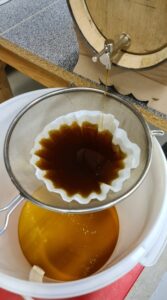
From New Make to Whisky
The small cask lay in the cellar at Fary Lochan Distillery at a reasonably constant temperature, so my decision was to fill the cask with new make from Fary Lochan, take the cask home, and let the changes happen over a minimum of 3 years so I could call it whisky.
The cask was now placed in my whisky room in our small wooden house in Sorø on December 17, 2020. Now the challenge was to leave it for 3 years. It can be a difficult task, especially when the cask first arrives. I created an Excel sheet with the starting point and dates for when color and taste should be checked. I don’t have an alcohol meter, and that was a challenge.
My son-in-law and I had agreed that every 6 months we would take a sample of 2 cl and assess the development. We had experienced how greedy the angels could be with the first cask, and this way, we could follow the development without taking too much from the cask. It only amounted to 14 cl out of the 700 cl we filled the cask with. However, we tried for the first time already on February 17, 2021, because we were a bit curious. There was a golden color, and the new make taste was still very pronounced.
The experiment was underway. New make at 63.47% in an amount of 7 liters had been put on our small cask and left to rest in the whisky room. Now it was just a matter of waiting.
Greedy Angels
I won’t take you through each of our samplings, but I’d like to reveal that we were somewhat surprised to experience quite a significant and rapid evaporation.
At the first 6-month sampling, notes of plums, raisins, green apples, and actually a quite tasty young spirit emerged. 60 cl of liquid had vanished at this sampling.
By the time it reached 1 year, 150 cl had disappeared, and we were a bit puzzled if there would be anything left after the next 2 years. We had 1 liter of new make left and considered whether we should fill it into the cask. That would, in that case, “ruin” our experiment of seeing what happens in a small cask over 3 years, so we refrained from doing so.
The taste at 1½ years was not good; it was burning and bitter, and the courage to expect a good whisky in the end dwindled a bit.
At 2 years old, with 1 more year to go in the experiment, only 4 of the original 7 liters remained, and we realized it was becoming an expensive experiment. However, the taste had improved slightly, which lifted our spirits. At 2½ years old, the taste had improved even more. It was a warm spirit, and the excitement grew; now it was fascinating to see what the last half year would do.
Bottling and measuring
On Tuesday, December 19, 2023, I drove to Farre. I had an appointment with Morten to tap and bottle.
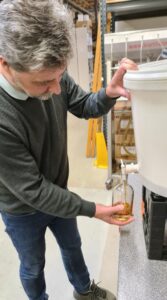
We were both excited to see the result, and we quickly set about emptying the cask. We let the whisky, yes, we could call it that now that 3 years and 2 days had passed since the cask was filled, flow from the small tap into a coffee filter to strain out the sediment from the cask and into a bucket.
The most beautiful dark mahogany color flowed, and the aroma was fantastic. Full-bodied with many exciting aromas on the nose.
It didn’t look of much in the large bucket once everything had been emptied out, but the scent was good. Morten fetched the digital measuring device to measure the alcohol strength and measured…
It couldn’t be right, and he measured again… I asked if the device needed calibration, and he assured me it had worked the day before. We agreed to clean it and try again. New measurement and another one…
All measurements showed almost the same result. We discussed that the alcohol percentage at filling was what it should have been, and I found a picture from the measurement at filling 3 years earlier, and yes, it was correct, the cask was filled at 63.47%.
Morten found a sample from someone who is doing the same experiment and measured that one. It was around 60%.
Now Morten found a hydrometer, and it also showed the same as the digital device. Now there was only one thing left to do – to taste. We got glasses, and at the same time, we asked Anne and Tine to come down and taste, because this was too wild.
Staggering ABV
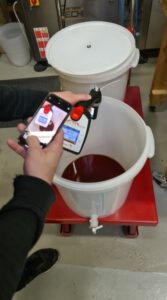
The measurements taken showed that the alcohol in the whisky is a staggering 82.92% – It’s no wonder it tastes warm, but it tastes good, and yes, it can handle a bit of water without ruining the taste.
So how does it happen that the alcohol percentage increases by nearly 20% from 63.47-82.92%?
The temperature in the room hasn’t been constant but has fluctuated between 17-28oC. During the hottest periods of summer, the cask was kept in a refrigerator at 5oC.
It makes sense that the liquid evaporates when it’s warm, and we also know that both liquid and alcohol evaporate in Scotland when it’s colder. We also know that significant evaporation occurs in other countries with high temperatures. In South Africa, they have an Angel’s share of between 9-15% per year, and in Taiwan, they also have an Angel’s share of 13-18% per year. So we can perhaps understand that there is less in the cask when it stands in a warm place.
The interesting thing is that there is a high evaporation of liquid, but it’s the water that disappears and not the alcohol. The alcohol remains in the cask, but how is that possible?
Low Humidity
A factor we haven’t considered at all is the humidity in the room. Normally, the humidity is relatively high in maturation warehouses, which helps to keep the water in the cask, but if the humidity is low, something interesting happens. The humidity in my whisky room is 23-26%, which is dry. Normal indoor humidity ranges from 25-60%, and the average humidity in Denmark is around 81%.
Here’s where it gets interesting and perhaps a bit nerdy, and I’ll try not to make it too complicated.
When the casks are maturing whisky on oak barrels, the wood “breathes,” causing the liquid in the cask to move in and out of the wood. This means that the wood expands when it’s warm and contracts when it’s cold. We want this movement because when the liquid is pressed into the wood and squeezed back into the cask, it imparts color and flavor to our whisky. There’s also a “filtration” of some of the impurities in the ethanol, which gives our whisky a rounder flavor over the years.
With heat, the pressure also increases in the cask, which causes the liquid to be pressed more into the wood.
If we briefly look at what’s filled in the cask, we can’t avoid that our preferred term for what we consume is whisky, but it’s ethanol and water. The molecular compositions in ethanol are C2H6O, and in water, it’s H2O, so ethanol is more dense in composition than water.
Water, therefore, has a smaller molecular composition than ethanol and becomes easier to “push” out through the wood, which means that ethanol remains in the cask while water evaporates. We thus have less liquid but retain the ethanol, which means that the alcohol percentage increases in our whisky as it matures.
If the temperature had been lower in the room and the humidity higher, there would have been a more even evaporation of both ethanol and water, which is what we typically experience in distilleries in, for example, Denmark, Scotland, Sweden, and Norway.
It’s probably a bit simplified, but that’s the process in short.
Dark Mahogany
The color of the finished whisky is also absolutely phenomenal. Beautiful dark mahogany. It’s also somewhat unusual that it becomes so dark when it hasn’t been on the cask for a longer period. However, we must remember that it’s a small cask and there’s good contact between the liquid and the wood. It gets filtered quite a bit.
What contributes to its uniqueness is that it has obtained the same color as the first time we used the cask. Back then, the cask had been stored in the cellar at Fary Lochan in cooler and more humid conditions.
We thought that it was the PX sherry used for seasoning the cask that had given the color. As mentioned earlier, the cask is made from used sherry casks from a Bodega in Jerez in southern Spain. It’s a European oak cask. From the small charcoal pieces that came out during emptying, I would assume that the cask was lightly toasted before seasoning with PX sherry. In other words, used staves were used. This means that there isn’t as much color to be gained as from a new cask, and we also used the cask to provide a finish, and it gave a good color to the whisky.
Here, where the cask is used again, the expectation was that the color would be somewhat lighter, but that wasn’t the case. The whisky became just as dark as the first time we used the cask. For comparison, I looked at the color of the whisky in the other experiment – the sample Morten had. The color of that sample was as if I were holding a 3-4 year Fary Lochan whisky from an ex-bourbon cask. Fine and golden yellow.
There must be something about the wood in our small cask that gives this very dark color. I can only come to the conclusion that it’s the same as Jes Mosgaard from Mosgaard Whisky Distillery experiences with his “Black Peat” Mosgaard whisky, which has gained its color from a Hungarian Oak barrel.
I have only been able to trace that the cask we have is made of European oak, so we probably won’t get any closer than that.
A Wild Transformation
If I summarize a bit, we’ve conducted a small experiment where several factors may not have been the main focus. Actually, it was simply the idea to see how the flavor would develop in a small cask over a period of 3 years – From New Make to Whisky.
We may have ended up with Denmark’s strongest whisky as a result.
A small 7-liter oak cask filled with New Make at 63.47% from Fary Lochan, turned into an explosive, fragrant, dry sherry whisky with a fantastic color and a whopping 82.92% alcohol in 3 years and 2 days.
It was stored in a room with low humidity and an average high temperature for whisky maturation. From 7 liters to just under 2.5 liters of finished whisky.
It’s fantastic to be surprised and experience this wild development where the whisky has been influenced by so many different elements that have created our “High Spirits Adventure.”
